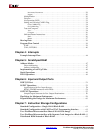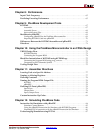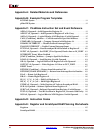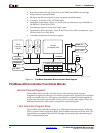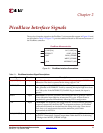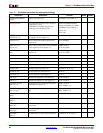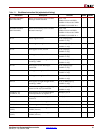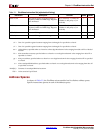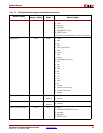
16 www.xilinx.com PicoBlaze 8-bit Embedded Microcontroller
UG129 (v1.1.2) June 24, 2008
Chapter 1: Introduction
R
performance requirements. A completely parallel implementation is faster but consumes
more FPGA resources.
A microcontroller embedded within the FPGA provides the best of both worlds. The
microcontroller implements non-timing crucial complex control functions while timing-
critical or data path functions are best implemented using FPGA logic. For example, a
microcontroller cannot respond to events much faster than a few microseconds. The FPGA
logic can respond to multiple, simultaneous events in just a few to tens of nanoseconds.
Conversely, a microcontroller is cost-effective and simple for performing format or
protocol conversions.
Table 1-1: PicoBlaze Microcontroller Embedded within an FPGA Provides the Optimal Balance between
Microcontroller and FPGA Solutions
PicoBlaze Microcontroller FPGA Logic
Strengths
• Easy to program, excellent for control
and state machine applications
• Resource requirements remain constant
with increasing complexity
• Re-uses logic resources, excellent for
lower-performance functions
• Significantly higher performance
• Excellent at parallel operations
• Sequential vs. parallel implementation
trade-offs optimize performance or cost
• Fast response to multiple, simultaneous
inputs
Weaknesses
• Executes sequentially
• Performance degrades with increasing
complexity
• Program memory requirements
increase with increasing complexity
• Slower response to simultaneous inputs
• Control and state machine applications
more difficult to program
• Logic resources grow with increasing
complexity



